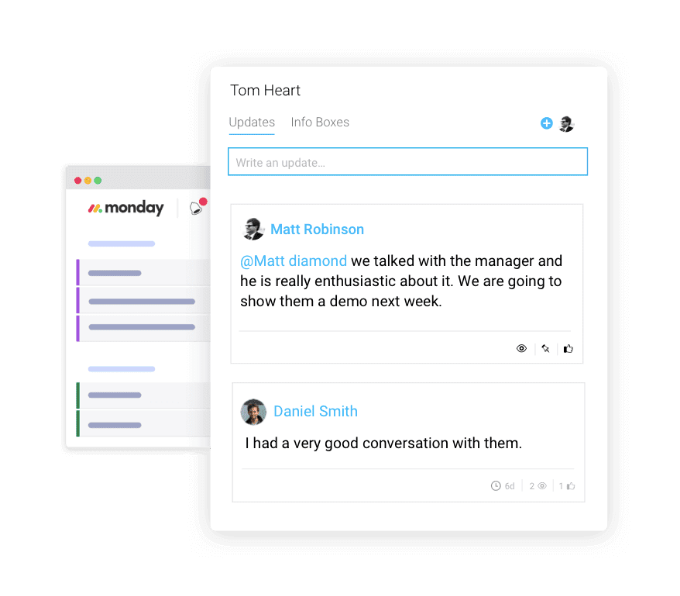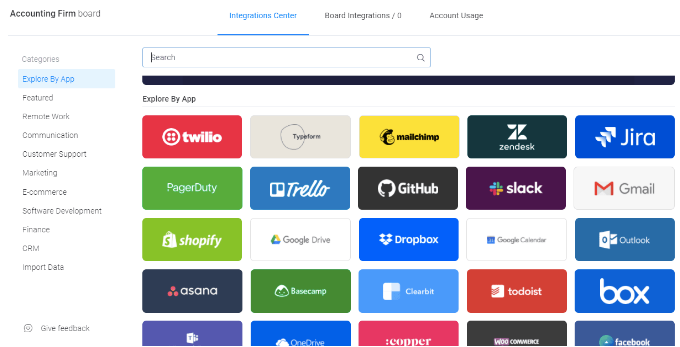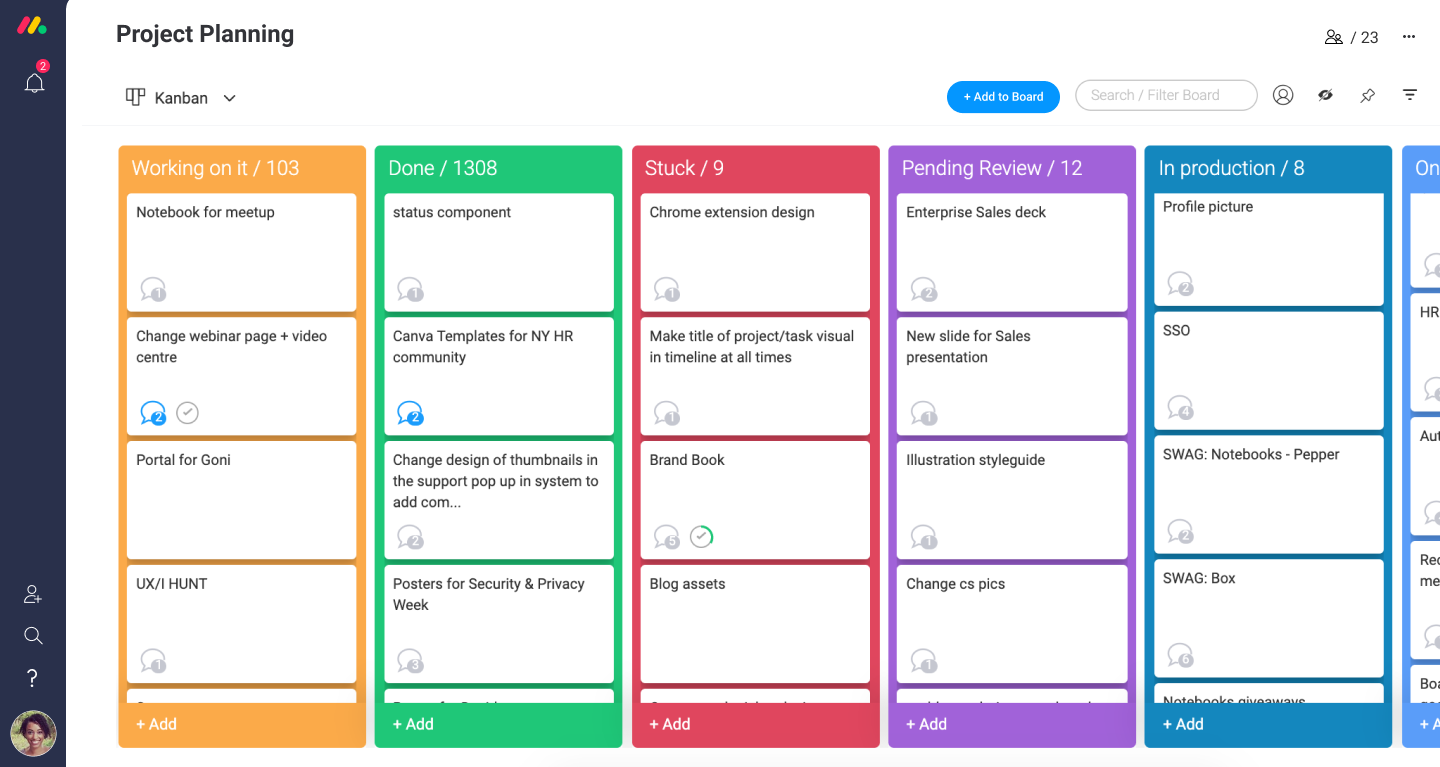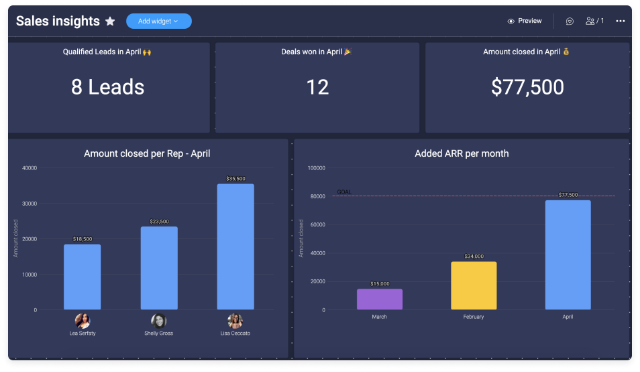Note-taking software such as Evernote or OneNote are probably among the top names you’d search if you’re seeking to bring order to the chaos of the many handwritten notes, business cards, and other important memos that clutter your workspace.
While note-taking apps and note-taking tools have been around for quite some time, many have evolved to include project management features like cloud storage and web clipping.
Rather than frantically scrolling through the complicated marketing web pages of each of these tools, this blog will compare OneNote to Evernote features and pricing to help you make the most informed decision possible — you might even decide that note-taking software won’t make the cut!
Evernote vs. OneNote: at a glance
As we mentioned Evernote and Microsoft OneNote are two of the biggest names for note-taking platforms. But before you start running to get an Office 365 subscription, or commit to any paid versions of such tools, really, let’s get started with some friendly introductions to these tools.
What is Evernote?
Evernote is an advanced note-taking application that’s been around since 2004. It lets you create an individual note or organize several notes together in an Evernote notebook.
You can also merge related notes and capture images, screenshots, PDFs, web clippings, and even YouTube videos. Along with capturing data, Evernote allows you to share your notes and collaborate — even with people who don’t have an Evernote account. Evernote is unique to most free plans because sharing is included in this tier.
Evernote syncs across multiple devices and mobile devices — including iPhone, iPad, and Android products — and integrates with email and Slack. In terms of support, email and chat are available to Premium and Business subscribers. Users of the free version have FAQs and forum support.
How much does Evernote cost?
Evernote has three plans including Free, Personal, and Professional. The prices we list will reflect monthly subscriptions plans. The Free plan comes without the monthly price ticket and comes with 60MB of monthly storage and the ability to sync 2 devices, which can potentially make it not suitable for most businesses.
The Personal plan subscription costs $7.99 per month, which ups the monthly upload limit to 10GB and takes your maximum note size from 25 MB to 200 MB. You can also sync across unlimited devices and start getting more creative with features like the ability to create custom templates and text formatting and mark up images and PDFs.
For $14.99 per user per month, Professional plan subscribers gain access to task management and collaboration tools, as well as 20GB of storage and 2GB per person per month. You can also export notebooks into PDFs.
What is OneNote?
To better understand the relationship of OneNote to Evernote, let’s let OneNote take the stage.
OneNote is the Windows version of a note-taking and productivity app that allows you to take notes, record audio, and capture screenshots.
OneNote is available on Windows, iOS, Android, and Chrome. This flexibility is nice because for example, in an organization operating with OneNote for Windows 10, notebooks live in the cloud — either on OneDrive storage or on SharePoint.
OneNote offers syncing across all of your devices and the ability to save web clippings and emails to notes. Multiple users can edit notes at the same time, making it a useful collaboration tool. Depending on the plan, the platform also has extensive integrations that allow you to share notes to Google Drive, social media platforms, Dropbox, and more. You can even use the “Ink” to free draw.
How much does OneNote cost?
OneNote is free to download, although you can unlock premium features with a Microsoft Office 2019 or Microsoft 365 subscription, including stickers and advanced sharing options. Microsoft 365 accounts start at $6.99 per month.
What is the difference between OneNote and Evernote?
Who wins across core note-taking functions in a showdown of Evernote vs. OneNote? Here are some of their top features.
1. Note-taking
The core feature of a note-taking app is, well, taking notes.
How Evernote handles it:
With Evernote, you can save pretty much anything to your notes — Slack messages, emails, and any image with text, while the web clipper lets you save websites. There’s a reason it’s still one of the most popular note-taking apps around, and it’s because of its advanced features, such as the ability to annotate PDFs and make text images searchable from any source or website.
How OneNote handles it:
With OneNote, you can capture data through typed notes, audio notes, web clippings, and more. It even has an ink-to-text feature. You can organize your notes into notebooks and run translation on them. OneNote also has text search and gives you the option of password-protecting sections of your text.
2. Collaboration
Collaboration has become highly sought-after in the software world as demand has grown for project management solutions. Note-taking apps have jumped on this bandwagon.
How Evernote handles it:
Evernote has features that allow you to collaborate with pretty much anyone while giving you control over viewing and editing rights. The Premium and Business versions of Evernote have brainstorming, task management, and workflow management features for handling tasks and deadlines.
How OneNote handles it:
OneNote allows real-time collaboration, which means more than one person can edit at the same time. The edits immediately sync across all accounts and devices. With OneNote’s many integrations, you can share files with anyone by Bluetooth, email, Facebook, YouTube, Flickr, and even Evernote.
3. Integrations
Integrations are essential for a note-taking app. They allow you to easily share and access information without switching between apps manually.
How Evernote handles it:
Evernote’s integrations with Gmail, Outlook, Slack, and MS Teams allow for seamless file sharing and collaboration. It also includes integrations with MS Office, which allow you to search inside Office documents and PDFs.
How OneNote handles it:
OneNote has extensive integrations. They include:
- CloudHQ: To sync with other cloud-based services, including Salesforce, Evernote, and Dropbox
- Epson: For printing
- Feedly: For saving articles for later
- Evernote Importer: To import notes from Evernote
- WordPress: For publishing on your blog or website
- Zapier: Allows OneNote to integrate with Trello, Basecamp, Twitter, and more
Evernote vs. OneNote: which one is right for your business?
Evernote scores 4.4 on the review website G2, while OneNote just beats it with 4.5. Here are the general recommendations for which tool best fits different sizes of organizations.
Small businesses and startups
Evernote’s free version is too limited in its features to be useful for a business. Cost is always an important consideration for any small business, and Evernote Premium and Business plans come in at $7.99 per month and $14.99 per person per month, respectively.
With OneNote, storage starts at 5MB per user, but Microsoft 365 subscribers get 1TB. Since Microsoft 365 plans start at $6.99 per month and include a range of other Windows apps, it may be the better option for small businesses.
Medium-sized businesses
Depending on your budget, the price of Evernote could still be a stretch for a medium-sized business. Especially since it’s not robust enough to be the only tool in your tech stack. Plus, if you already use Microsoft Office and have a 2019 or 365 subscription, OneNote’s premium features and additional storage are included.
With Evernote, a medium-sized business would probably need a Business account, the most expensive plan, to have enough storage space.
Enterprise-level businesses
If you’re an enterprise-level business, you probably have large volumes of files and vast, complex webs of collaboration and dependencies. As a result, Evernote may not be up to the task. Although you can probably afford the monthly cost per user, you probably need to manage multiple projects across multiple departments, which Evernote is not suitable for.
Since OneNote integrates with the tools you already use, is free, has no upload limit, and boasts comprehensive collaboration features, it may be the better option for enterprise businesses.
monday.com: a more powerful alternative to note-taking software
It may be that note-taking software isn’t actually the best solution for your business, no matter the size. Businesses of all sizes can benefit from using a Work OS like monday.com — it does everything a note-taking app does and so much more.With monday.com, you can build custom apps that work exactly the way you need them to, which means it grows with your business. Some of monday.com’s most popular features include:
Collaboration
Collaboration has never been easier with monday.com, which has a variety of collaboration features, including:
- Comments
- Tags
- Instant messaging
- File sharing
- workdocs
This means essential information always gets to the right person without clogging up the whole team’s inbox with long, annoying email chains.

Integrations
monday.com has integrations with all your favorite software tools, allowing you to centralize your files in one place and share them straight to other platforms.

Multiple view options
With monday.com, there are many ways to visualize your data, including Kanban boards, Gantt charts, Calendar views, and more, making it easy to track and manage projects.

Monitoring and reporting
One of monday.com’s most popular features is our dashboards, which allow you to see the data that’s most relevant to you, determine what’s working and what isn’t, and make data-driven decisions. Plus, you can generate accurate, in-depth reports in seconds.

Evernote vs. OneNote: final thoughts
Although still popular, Evernote isn’t best suited for business use — small and medium businesses will find its pricing plans steep, while enterprises will find its functionality too limited. For personal or family task management, however, it might be just what you need.
On the same vein, OneNote may be a good option for small companies at first, but you may find yourself looking for a new platform once your business grows. Instead, consider investing in a Work OS — like monday.com — that adapts to your needs from the start and grows with you.
Get started with our team task tracker template and see for yourself — the first 14 days are on us.

